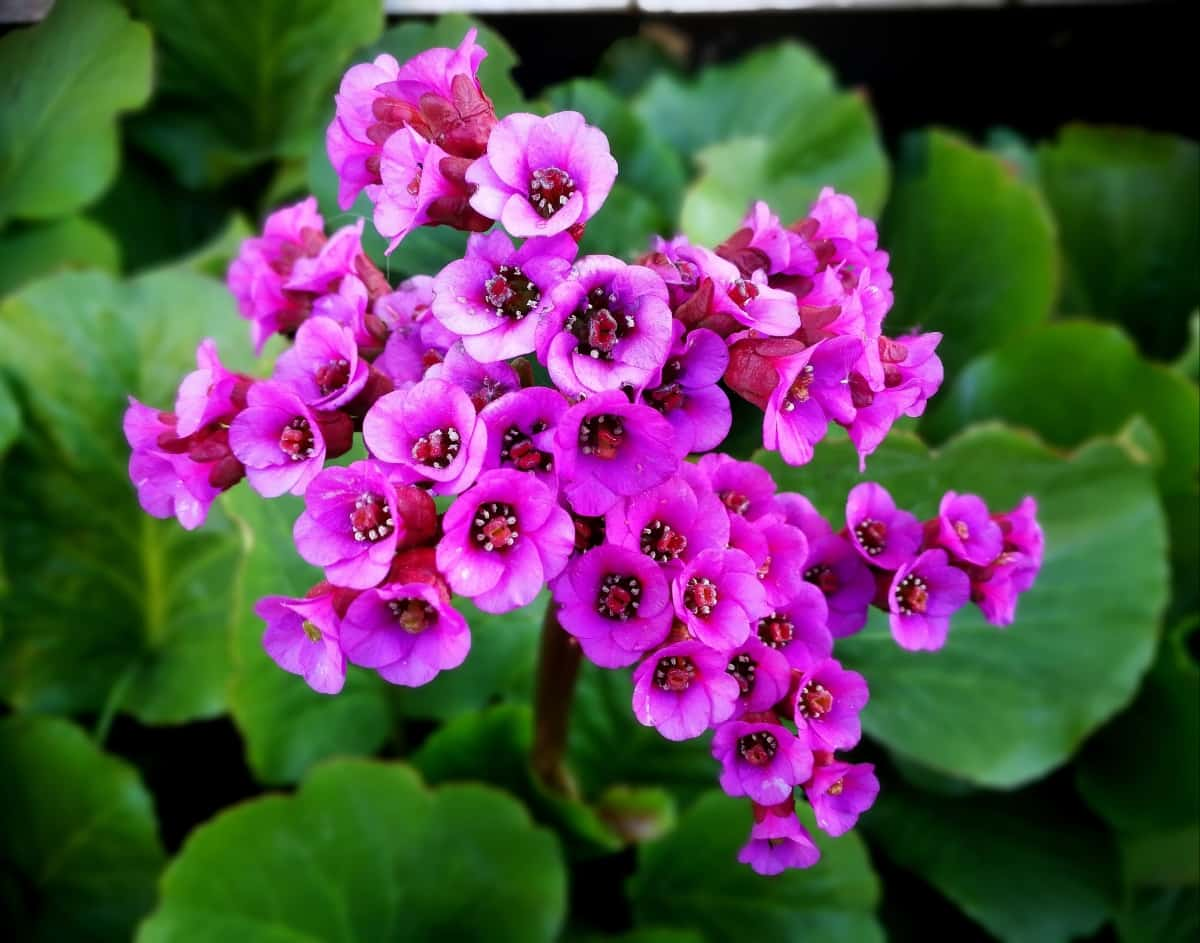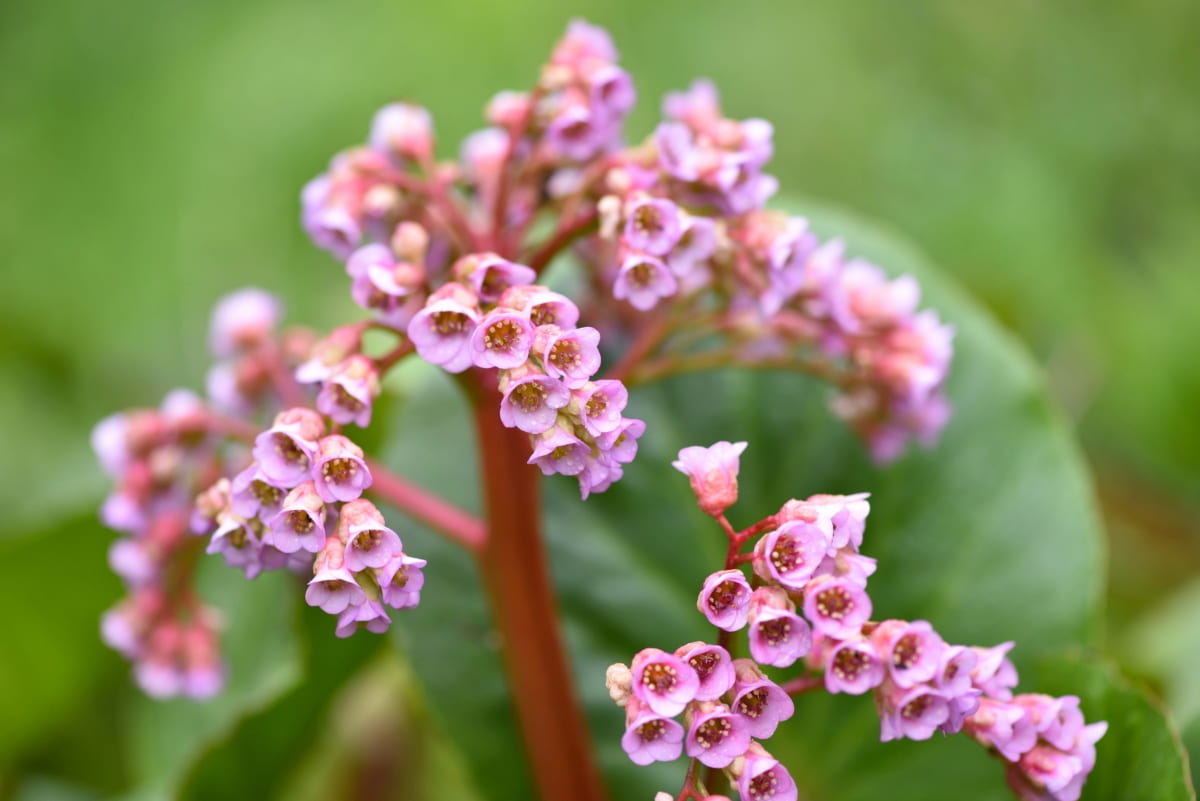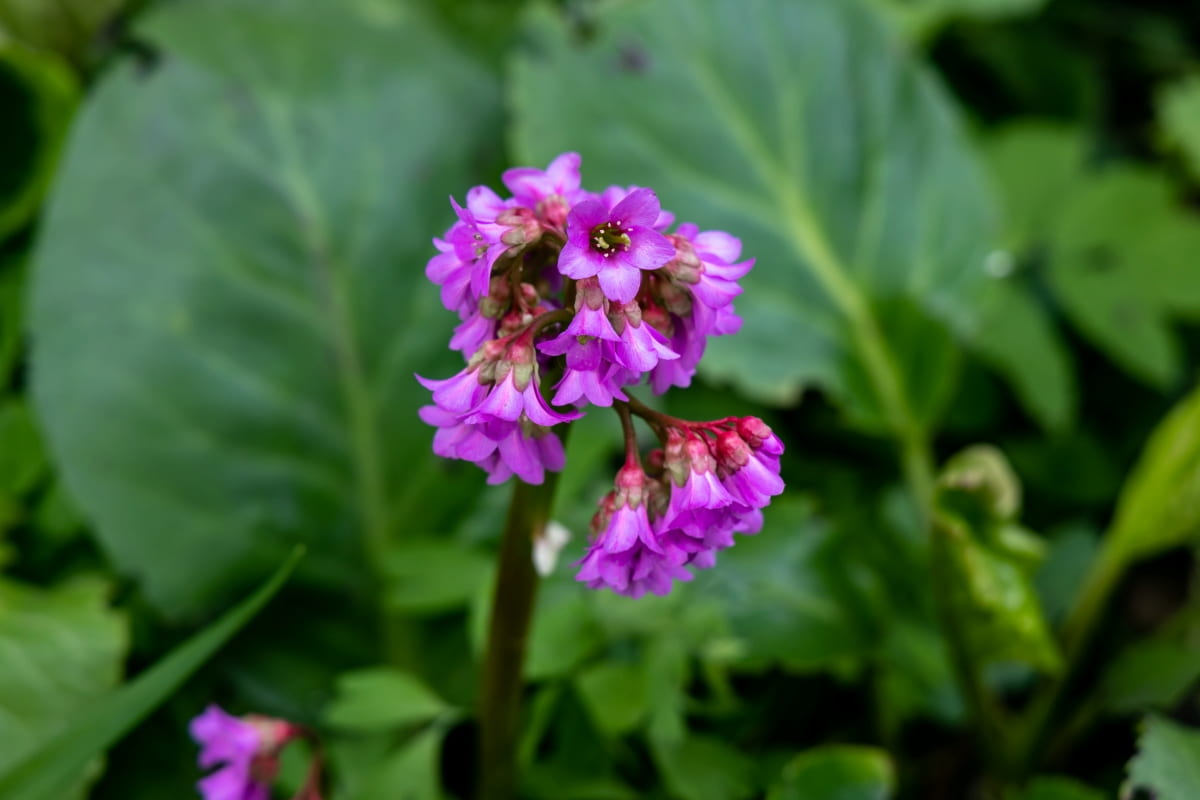Bergenia flowers come in various colors and making them perfect for beginners. Bergenia flowers, called Elephant’s Ears, are hardy plants originating in Asia. These plants are easy to grow, requiring just a little water and sunlight.

How to Grow and Care for Bergenia Flowers
Best Soil for Growing Bergenia Flowers
- The best soil for growing Bergenia flowers should be rich in nutrients, well-drained, and slightly acidic. Ensuring the soil has good drainage is essential, as these plants do not like sitting in waterlogged soils. Therefore, sandy loam, a mixture of sand, clay, and organic matter, would work well.
- Bergenia flowers prefer slightly acidic soils with pH levels between 5.0-6.5. You can use soil testing to determine your garden’s pH level and amend it by adding organic matter.
Sunlight Requirements for Bergenia Flowers
Bergenia flowers are low-maintenance plants that can thrive in various lighting conditions. However, it’s important to understand their sunlight requirements for the best results. This makes them good for planting under trees or near tall buildings that provide some shelter from the sun. If you’re planting Bergenia flowers in full sun areas, ensure they receive adequate protection during the hottest day. You can do this by providing a shading mechanism like a garden umbrella or cloth coverings.
Propagating Bergenia from Seeds or Cuttings
- The best way to expand your collection of Bergenia is by propagating them from seeds or cuttings. Propagating these plants can be done in a few simple steps and requires minimal effort.
- If you plan on propagating Bergenia from seeds, they must be sown fresh. Suppose you collect the seeds when they become ripe and sow them immediately before they dry out. It’s best to sow the seeds into trays filled with moist seed-raising mix and keep them under bright light until germination occurs.
- Another way to propagate Bergenia is through stem cuttings. Take a 10-15cm cutting from an established plant during its growing season, ensuring it has at least one node where leaves emerge.
Watering Schedule for Bergenia Plants
- Watering is essential to Bergenia plant care, and getting the schedule right is crucial. Overwatering can lead to root rot, while under-watering can cause the leaves to wilt and dry out.
- Bergenia prefers moist soil but not wet or waterlogged. The ideal way to check if your plants need watering is by inserting a finger into the soil. If it feels dry up to an inch deep, then it’s time for watering.
- It will help if you water more frequently during hot summer than cooler seasons. However, please don’t overdo it; too much water can harm the plant.
- If you’re growing Bergenia in containers or pots, remember that they tend to dry out faster than those planted on the open ground due to smaller soil volume.
Transplanting Bergenia Successfully
- Choose the best time for transplanting; the ideal time is in late fall when Bergenia is dormant and has stopped flowering.
- Prepare the area where you want to transplant your Bergenia carefully. Ensure the soil is well-draining and fertile enough for these plants to thrive.
- Dig out your existing plants from their original spot with care. Hold their base firmly before digging around them to avoid damaging their roots.
- Replant each plant at its new location by digging holes slightly deeper than necessary and then placing each plant inside gently.
- Water your newly transplanted Bergenia generously after planting them in their new spot. This will help them establish themselves quickly and grow again soon after transplantation.
In case you missed it: How to Grow and Care for Anthurium Flowers: A Comprehensive Guide for Beginners

Pruning Tips for Healthy Bergenia Plants
- Pruning is essential to caring for Bergenia and helps maintain their health. Removing dead or damaged leaves as soon as possible is important. This will keep the Bergenia plant looking neat and prevent diseases from spreading.
- When pruning, always use a sharp pair of scissors or shears to make clean cuts. Avoid tearing the leaves, as this can damage the plant.
- One common mistake many gardeners make is cutting too much foliage at once. Don’t be tempted to prune over one-third of the leaf area in a single session. Otherwise, you risk stressing out your Bergenia plant, which may stunt its growth or even kill it. Another tip is to cut back flower stalks after they have finished blooming. Doing so redirects energy toward growing new leaves and flowers instead of producing seeds.
- Avoid pruning during winter months when your Bergenia enters dormancy mode unless necessary for removing diseased leaves or stems that could attract pests over time.
Fertilizing Techniques for Vibrant Bergenia Blooms
- Fertilizing your Bergenia is an essential part of their care routine, helping to promote healthy growth and vibrant blooms. The best fertilize time for your plants is during the growing season, from late winter to early autumn.
- Choosing the right fertilizer can make a big difference in the health of your Bergenia flowers. Look for a balanced fertilizer with equal nitrogen, phosphorus, and potassium.
- Notice that your Bergenia flowers are not blooming as vibrantly as they should be despite proper care techniques such as watering and sunlight requirements. It may be time to adjust your fertilization schedule or try a different type of fertilizer.
Identifying and Treating Common Bergenia Plant Diseases and Pests
- Being familiar with the common diseases and pests that can affect your plants is important as a Bergenia plant owner. Early identification of these issues is key in preventing them from spreading irreparable damage.
- The most common disease that affects Bergenia plants is the leaf spot. This fungal disease causes brown spots on leaves, which can eventually lead to defoliation. To prevent this disease, ensure proper watering techniques by avoiding overhead and applying fungicides when necessary.
- Another issue for Bergenia plants is root rot caused by overwatering or poorly drained soil. Signs of root rot include yellowing leaves, wilting stems, and an unpleasant odor from the soil. Prevention methods include ensuring adequate drainage in pots or planting beds and reducing water during periods of high humidity.
- Bergenia may also attract garden pests such as aphids, spider mites, and slugs which feed on their foliage leading to stunted growth or even death if not addressed promptly. Insecticidal soaps or natural predators like ladybugs can help control these unwanted visitors.
Mulching Methods for Bergenia Plant Care
- Mulching is an essential part of the Bergenia plant’s care routine. It helps to retain soil moisture, suppress weeds and regulate soil temperature.
- One option is using organic materials such as shredded leaves or grass clippings.
- Another option is using inorganic materials such as stones or gravel. This method can help improve drainage around your plants while still providing a barrier against weeds.
- You can also use biodegradable mulches made from cornstarch or paper that gradually decompose into the soil without harming your plants.
Tips for Growing Bergenia Flowers Indoors
- Growing Bergenia flowers indoors can be a rewarding experience for any plant lover. With the right plant care, these hardy plants can add color to your home all year round.
- Remember to choose a well-draining soil mix and regularly provide ample sunlight and water but not excessively. Fertilize your plants every four weeks during their growing season to encourage vibrant blooms.
- If you notice signs of pests or disease on your indoor Bergenia, act quickly with appropriate treatment measures such as neem oil or insecticidal soap. And finally, don’t forget to periodically prune back leggy stems and dead foliage.
In case you missed it: How to Grow and Care for Poinsettia: A Step-By-Step Comprehensive Guide

Conclusion
Bergenia flowers are a type of perennial native to North America. These beautiful plants are easy to grow, care for, and add to any garden or indoor space. These beautiful perennials come in various colors, including pink, red, and white. They typically bloom from late winter to early spring and can continue flowering through the summer.
- Feed Your Flock for Less: Top 10 Tips to Save on Chicken Feed
- Ultimate Guide to Ossabaw Island Hog: Breeding, Raising, Diet, and Care
- Hatching Answers: The Top 10 Reasons Your Chickens Aren’t Laying Eggs
- Eggs and Economics: Breaking Down the Cost of Raising Backyard Chickens
- Defend Your Greens: Proven Methods to Keep Iguanas Out of Your Garden
- Ultimate Guide to Cinnamon Queen Chicken: A Comprehensive Guide for Beginners
- Ultimate Guide to California Tan Chicken: Breeding, Raising, Diet, Egg-Production and Care
- Ultimate Guide to Marsh Daisy Chicken: Breeding, Raising, Diet, and Care
- 10 Types of Chicken Farming Businesses You Can Start for Profits